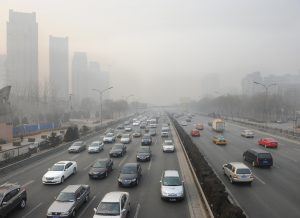President Joseph Biden Jr. signed Executive Order (EO) 14057, Catalyzing Clean Energy Industries and Jobs Through Federal Sustainability, on December 8, 2021. This EO directs the federal government to decarbonize by 2050 and orders it to “lead by example” and use its “scale and procurement power” to achieve five ambitious goals:
- 100% carbon pollution-free electricity by 2030, at least half of which will be locally supplied clean energy to meet 24/7 demand;
- 100% zero-emission vehicle (ZEV) acquisitions by 2035, including 100% zero-emission light-duty vehicle acquisitions by 2027;
- Net-zero emissions from federal procurement no later than 2050, including a Buy Clean policy to promote use of construction materials that result in lower greenhouse gas (GHG) emissions from production and transportation;
- A net-zero emissions building portfolio by 2045, including a 50% emissions reduction by 2032; and
- Net-zero emissions from overall federal operations by 2050, including a 65% reduction in scope 1 and scope 2 GHG emissions (i.e., direct GHG emissions and indirect GHG emissions associated with the purchase of electricity, steam, heat, or cooling) by 2030 from 2008 levels.
Without passing any legislation or issuing any new regulations, by sheer purchasing power alone, the federal government drives demand, says Sarah Bloom Raskin, a Duke University law professor who served as treasury deputy secretary under President Barack Obama, in a Washington Post article.
That annual purchasing power is estimated at $650 billion, according to the White House Fact Sheet about EO 14057.
“It doesn’t tell the private sector entities what to do, but to some extent it will demand a certain kind of good and service so companies can shift what’s being made,” Raskin says.
“Administration officials said the size of the federal fleet alone — which includes some 645,000 vehicles — could lower the cost of electric vehicles, batteries and other technology. Just as the green building certification process known as LEED nudged private developers toward eco-friendly construction, a government-wide effort to cut emissions could shape the public’s tastes and buying habits,” reports The Washington Post.
Senate Environment and Public Works Committee Chairman Tom Carper, D-Del., issued a statement praising the Order on December 8, 2021.
“This executive order will … enhance the implementation of our recently enacted bipartisan infrastructure bill, meaning more Americans getting to work in good-paying jobs,” Carper’s statement said. “Still, our work to address the existential threat of climate change continues. States should follow the federal government’s lead and implement their own emissions reduction plans. I believe we can help support states as they do so. That starts with passing the Build Back Better Act and seizing the opportunity to make the President’s climate goals a reality.”
One of the biggest challenges the government will face is repairing the many aging buildings that house federal government offices.
“Burning fossil fuels to heat and cool buildings in the United States produces nearly a third of the nation’s greenhouse gas emissions,” The Washington Post adds. “Although improvements in energy efficiency have made a dent in carbon pollution from buildings, Americans’ increasing reliance on electronics and appliances is expected to increase emissions by mid-century.
“As the country’s largest landlord, the U.S. government oversees about 300,000 properties built during different eras, under a wide range of code requirements. Both existing and new buildings would be covered by Biden’s executive order, as well as military bases and leased facilities that the government doesn’t directly control.
“Under the order, the White House Council on Environmental Quality would draw up performance standards for federal buildings for the first time so government officials can evaluate a facility’s carbon footprint.”
Biden’s infrastructure bill, signed into law last month, includes partial funding for the government’s transition, but agency budget allocations may constrain some of the funding that would allow the federal government to achieve net-zero carbon emissions by 2050.
Besides the financial constraints, the plan has several hurdles to overcome, including logistical obstacles and pushback from Republican lawmakers, industry, and environmental groups, The Washington Post says.
Both the Center for Biological Diversity and the Sunrise Movement said the Order does not go far enough, and Senator John Barrasso, R-Wyo., the top Republican on the Senate Committee on Energy and Natural Resources, claims the plan will be harmful to states with large fossil fuel reserves.
“President Biden’s strategy is to destroy the economies of Wyoming, West Virginia and other energy-producing states,” says Barrasso. “With this action, he’s telling millions of Americans who provide most of the energy we use every day that he thinks they should be thrown out of work.”

